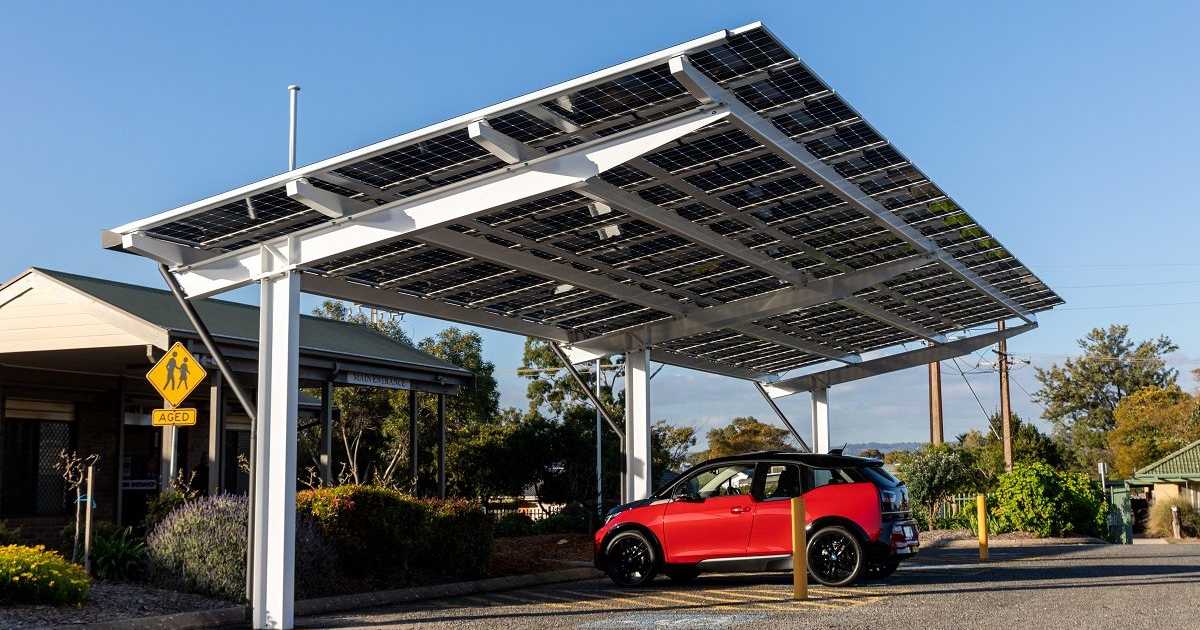
Another solar carpark using an innovative design system and bifacial solar panels has popped up – this one outside the City of Onkaparinga’s Wakefield House at Morphett Vale in Adelaide’s south.
A new 22kW solar power system has been installed at the centre that is generating cheap, clean power while also providing some shade for vehicles parked underneath. The 54 modules used for the project are bifacial solar panels, meaning they generate electricity from light hitting the panels from below as well as above; with the structure angled to maximise solar energy generation.
If the design of this solar carport looks familiar to regular readers, that’s likely because it uses a system recently mentioned by SQ’s Richard. PVDynamics’ Series 100 solar roofing system is a low-labour way to rapidly install solar panel roofs for outdoor structures. You can read more about it here.
The solar car park adds to Wakefield House’s existing 6kW rooftop array and is expected to reduce the facility’s energy bills by $7,500 annually, while avoiding 14 tonnes of carbon dioxide equivalent (CO2e) emission each year.
“Additionally, most of the structure’s materials were manufactured locally and are made to be recycled at the end of their 25+ year lifecycle,” said City of Onkaparinga Green Buildings Officer Ryan Halyburton.
Green Buildings Initiative
The Wakefield House project is part of Onkaparinga Council’s Green Buildings Initiative, an ongoing program seeking to slash energy consumption, water use and greenhouse gas emissions associated with all Council-owned buildings.
This project follows the recent installation of more than 1,000 solar panels at three of the City of Onkaparinga’s highest energy-consuming sites
- Noarlunga Civic Centre and Council Chambers
- Field Operations centre at Seaford Meadow
- Woodcroft Community Centre
The three installations are expected to deliver an annual saving of $81,060 and simple payback will be achieved within 6 years. It’s not uncommon for payback on commercial solar to be achieved in 5 years and SQ’s Ronald noted back in 2018 that payback on solar for small businesses can be under 3 years.
According to Council’s Cities Power Partnership page, 457kW of solar PV is installed on 27 council owned buildings. City of Onkaparinga isn’t done with its solar power rollout yet – another five sites will have panels installed by the end of 2020.
In March this year, Council said it had slashed its corporate greenhouse gas emissions by 42 per cent over the past decade and its electricity use had dropped by 35 per cent since 2010-11. This hasn’t been attained just through Green Buildings and solar energy, but other actions including changing 12,000 streetlights to 14-watt LED technology in 2018 – with further LED replacements to come.
Beyond Council, solar power remains very popular across the City of Onkaparinga – as at March this year, 43% of homes in the local government area had solar panels compared with 36% across South Australia.

 RSS - Posts
RSS - Posts



Speak Your Mind